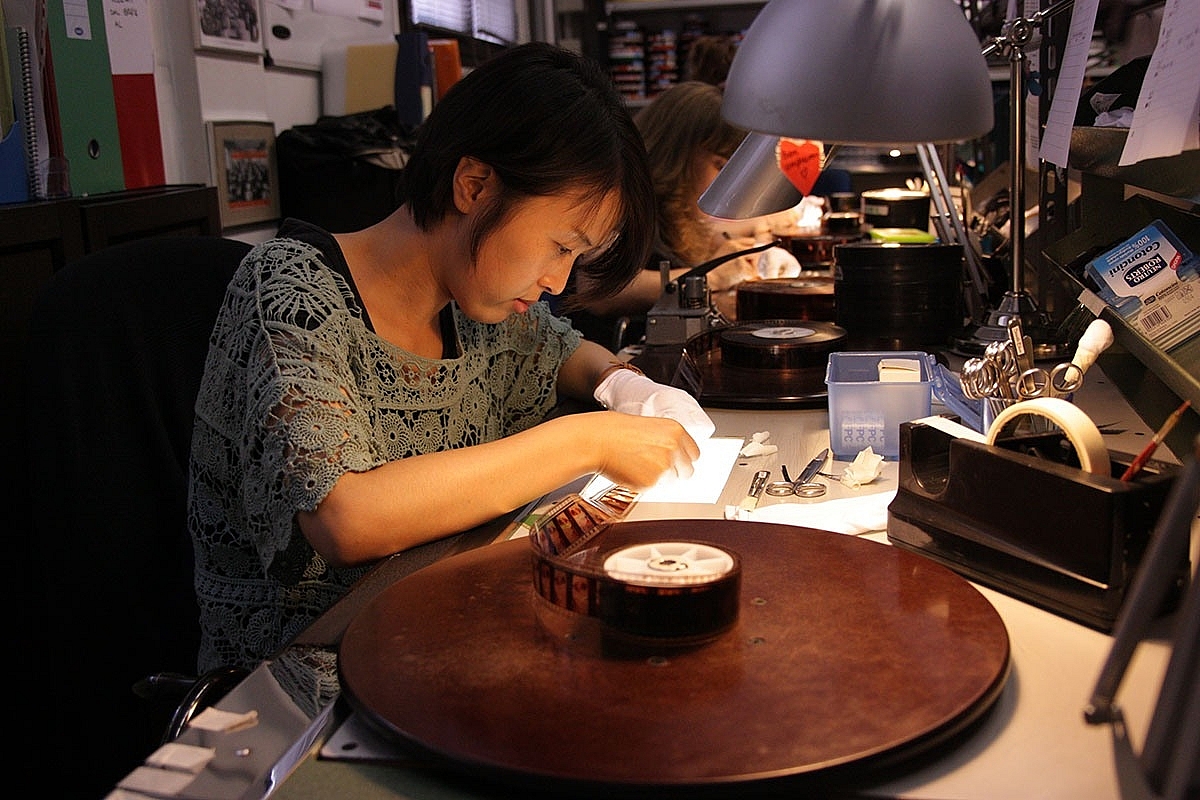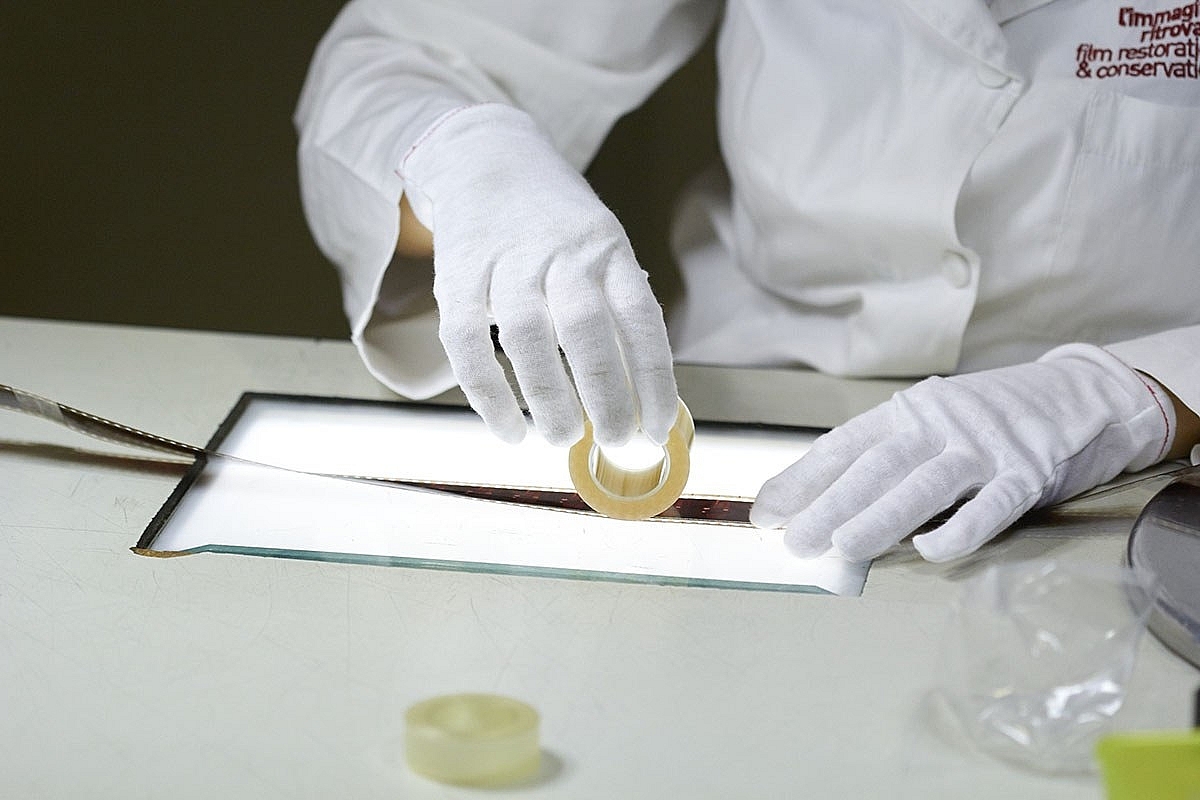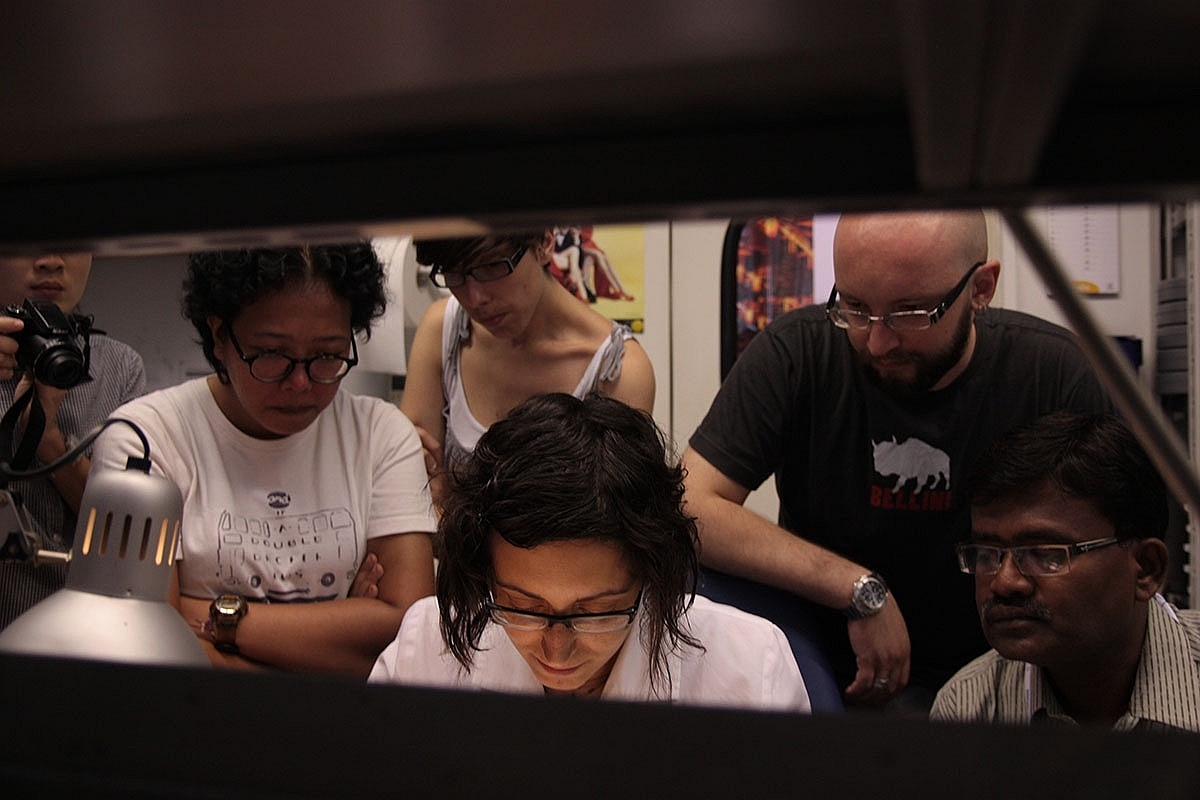Preserving the magic of the movies is a work of heart for Laboratorio L'immagine Ritrovata

Trainees come to L'immagine Ritrovata from all over the world for instruction into specialist restoration and preservation techniques.
Saving works of art for future generations is always a passionate endeavour. And, when it comes to safeguarding the magic of the movies, never was that ardour more heartfelt than by Davide Pozzi and the expert film restoration and preservation team at Laboratorio L'immagine Ritrovata in Bologna, Italy.
“We are cinephiles,” declares Pozzi, the company’s managing director. “Like me, many of our team came to study the history of cinema at Bologna University, and stayed here. Their love of the moving image is a really big thing, and it makes the difference in everything we do. We want to be the best in the world at film restoration/preservation, and all of our work is carried out with the greatest of respect for the historical value of the original material.”
Founded in 1992, the company – owned by the renowned Cineteca di Bologna film archive – has brought a fresh lease of life to literally hundreds of iconic gems. These include landmark footage from 1895 shot by Lumiere Brothers and Charlie Chaplin’s entire oeuvre, through to cinema classics such as Bicycle Thieves (Vittorio De Sica, Italy, 1948), L’Atalante (Jean Vigo, France, 1934), Novecento (Bernardo Bertolucci, Italy, 1976), Cyrano de Bergerac (Jean-Paul Rappeneau, France, 1990) and Driving Miss Daisy (Bruce Beresford, USA, 1989), to name just a few.

Trainees come to L'immagine Ritrovata from all over the world for instruction into specialist restoration and preservation techniques.
The Laboratorio L'immagine Ritrovata, employs about 80 people and works on around 140 films each year. Along with restoring and preserving films held by Cineteca di Bologna, which itself holds around 60,000 titles, L'immagine Ritrovata has long-established relationships with the leading classic movie players in Europe, including Pathé, Gaumont, Studiocanal, and Lyon’s Institute Lumiere, which is headed by Cannes artistic director Thierry Fremaux. It also counts Martin Scorsese’s The Film Foundation and World Cinema Project Foundation on its lengthy client list.

Trainees come to L'immagine Ritrovata from all over the world for instruction into specialist restoration and preservation techniques.
The company’s success has been such that it has opened branches in Paris and Hong Kong, the latter having undertaken restorations of vintage Asian cinema jewels by such masters as Bruce Lee, Jackie Chan, John Woo, Hou Hsiao-hsien and influential Filipino auteur Lino Broka.
“When undertake any restoration work, it’s not just a purchase order,” says Pozzi. “We engage in a dialogue with each client, spending time to explain what we do and the detail of our various processes.”
At Laboratorio L'immagine Ritrovata, film restoration begins with the meticulous study and inspection of the material to decide the most appropriate restoration workflow, with full documentation of the work to be undertaken, along with a timeframe for the conclusion of the work.

L'immagine Ritrovata artisans, employ all manner of equipment and methods to repair and splice together the wide array of nitrate and acetate film stocks.
Celluloid repair work is often carried out by hand. The company’s artisans, employ all manner of scissors, scalpels, tweezers, swabs, solvents, specialised adhesive tape, glue and brushes, in order to splice together the wide array of nitrate and acetate film stocks.

A Singaporian student learning to lace up film in the machine room at L'immagine Ritrovata
In recent years, L’Immagine Ritrovata has invested in chemical treatments (drying, softening, rehydration), giving a second life to film that might otherwise have been lost. Repaired film also undergoes complete ultrasound cleaning.

Special chemical treatments (drying, softening, rehydration) give a second life to film that might otherwise be lost
Digital restoration starts using ARRISCAN technology (with wet-gate transfers when required), which can scan cellulose nitrate, diacetate and triacetate films of even the most delicate, fragile states. Corrections to the scanned footage cover a vast range of problems and flaws from image stabilisation and de-flickering, to the elimination of dirt, dust, scratches, tape and splice marks, and grain manipulation, in either manual or automated workflows. The company’s in-house grading suite is equipped with 4K and 2K colour correction, subtitling and DCI capabilities.

Visitors from Mumbai get hands and noses on film at L'immagine Ritrovata
“We always propose analogue preservation on film to our clients, and explain why this is important,” says Pozzi, “Fundamentally, I am absolutely in no doubt about the longevity of film – it will far outlive me. When they realise that film is in fact good for hundreds of years, they very often decide to take up this offer.”

Visitors from Mumbai get hands and noses on film at L'immagine Ritrovata
For preservation work, L'immagine Ritrovata has two ARRILASERs for recording onto 35mm at 4K and 2K resolution in all common aspect ratios. Optical sound recording on new negative tracks is carried out with a Westrex 35mm. The film processing lab is equipped to duplicate original 35mm negatives, plus B&W and colour positive release prints.

Visitors from Mumbai get hands and noses on film at L'immagine Ritrovata
“At the start of the digital era, people started to move away from film as a preservation format. But what many are now finding is that digital can be fraught with danger,” Pozzi remarks. “A hard drive or LTO-tape might not read properly, and could even be permanently corrupted. Also, what device will you need to read a digital file created today in 50 to 100 years from now? Film just needs a source of light.”

Visitors from Mumbai get hands and noses on film at L'immagine Ritrovata
To help spread the word about its services, L'immagine Ritrovata is an active supporter of leading film festivals such as Cannes, Venice, Berlin and Locarno. But passion for preserving film is such that he company regularly organises training courses in collaboration with Cineteca di Bologna and Fédération International des Archives du Film (FIAF). Trainees come from all over the world for instruction and guidance from laboratory personnel into the specialist restoration and preservation techniques and methods. These courses are also promoted the Association des Cinémathèques Européennes (ACE) and the European Union’s MEDIA Plus Programme.

Trainees come to L'immagine Ritrovata from all over the world for instruction into specialist restoration and preservation techniques.
Once again, Kodak is supporting the 2018 FIAF Film Restoration Summer School taking place in Bologna from June 23rd to July 13th. The eighth edition of the school's three-week programme, includes one week of theoretical panels during the annual Il Cinema Ritrovato Festival in Bologna, and two weeks of practical hands-on lessons at L'Immagine Ritrovata for 40 participants worldwide. In the past seven editions of the festival, the summer school has hosted 254 participants representing 65 different countries. Il Cinema Ritrovato Festival also features outdoor screenings of restored classics in the city centre, often attracting crowds in excess of 5,000 people.

The annual Cinema Ritrovato Festival in Bologna, featuring outdoor screenings of restored classics, attracts crowds in excess of 5,000 people.
“There’s a lot of interest from the general public in classic films, and I love the power of the movies to bring people together,” says Pozzi. “Shooting feature films on films is a wonderful thing and it's great to see Kodak doing well as more filmmakers embrace celluloid these days.

The annual Cinema Ritrovato Festival in Bologna, featuring outdoor screenings of restored classics, attracts crowds in excess of 5,000 people.
“But, for us, safeguarding productions for the future is something else. As well as telling stories, movies are important chronicles of cultural and social history, of artistic endeavours and creative choices, and it is vital that they are preserved for generations to come. No doubt, analogue film is the very best way to keep them safe.”